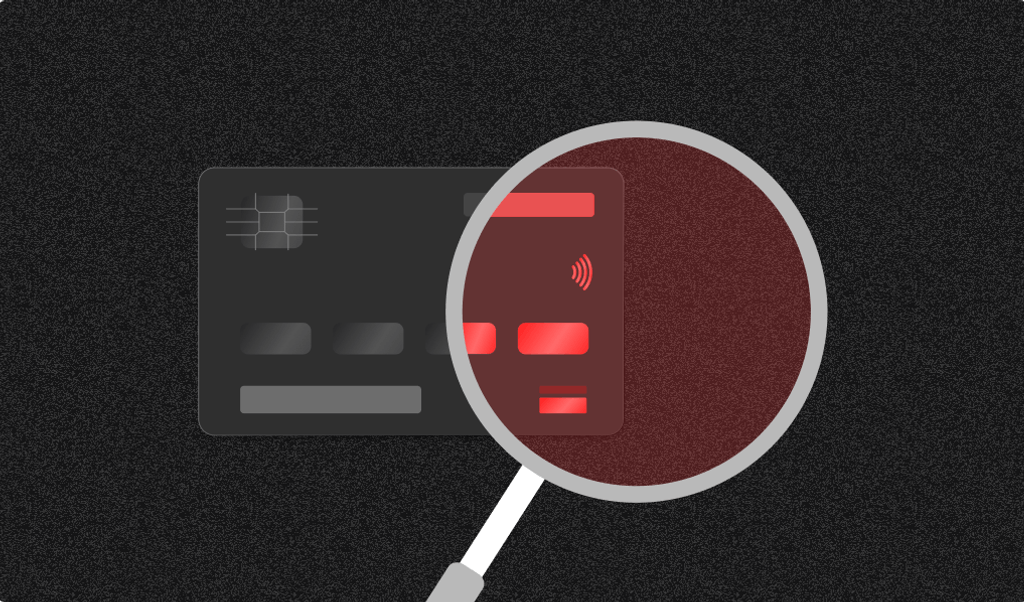Transaction fraud can impact financial stability and trust for businesses and customers alike.
If you run a company, understanding how to shield your transactions from fraudulent activities is not just beneficial; it's fundamental to your business's security. Transaction fraud detection helps maintain your reputation and customer relationships.
Being proactive in identifying suspicious activities can greatly reduce the risk of financial losses. Detecting online fraud after it has occurred is one thing. But you should also implement preventative measures to deter potential fraudsters in the first place.
Bottom line: You need to equip yourself with the necessary tools and knowledge for effective fraud management and detection.
This article is your go-to guide to understanding transaction fraud detection. You’ll learn what it is, how it works, and techniques for preventing fraud from happening.
What is transaction fraud?
According to a recent article on Payments Dive, payment scams are expected to rise to $3 billion by 2027. These scams cover a range of different types of fraud. For further reading, here are 10 common types of payment fraud you need to be aware of.
Transaction fraud, specifically, is when you or a business experience deceit in a financial transaction. Fraudsters use stolen or fake information to carry out unauthorized purchases or payments. Fraud can result in financial losses, damaged reputation, and operational complications.
Types of transaction fraud include:
- Stolen card information: Credit card fraud is common and fraudsters use your card information to make unauthorized online payments
- Account takeover: Illicit access to another's account and performing transactions
- False refund requests: Deceiving a business into refunding a legitimate purchase
In response, transaction fraud detection and prevention methods are used to identify and stop these activities.
These are powerful tools to safeguard your accounts against potential threats. They analyze behaviors, identify transaction patterns, and flag anomalies to combat fraudulent actions.
Detecting fraud involves:
- Real-time analysis: Spotting suspicious activities as they happen
- Data verification: Confirming the validity of transactional information
- Anomaly detection: Highlighting transactions that deviate from the norm
If you run a business or handle financial transactions, keeping an eye out for unusual activities can save you considerable trouble.
Adopting thorough prevention strategies and staying informed can help protect your hard-earned assets and maintain your professional integrity.
How transaction fraud works
Understanding how transaction fraud happens is the first step toward detecting and preventing it. You'll find this type of fraudulent activity often follows a multi-stage process, with data theft typically coming first and leading to monetization.
Here's a closer look at each step.
Data theft
A report by the Identity Theft Resource Center stated there were 1,862 data breaches in the United States in 2021 — a 68% increase over the previous year.
Data theft like this is where cybercriminals begin. They steal sensitive information, hack into databases, or deploy malware to siphon credit card details from unsuspecting victims.
Phishing attacks are also commonly used where you might be tricked into giving away personal information. For example, with email or social media.
Data theft in transaction fraud hinges on getting a victim's payment information through various illicit means. Identity theft, a critical component of this phase, occurs when fraudsters obtain and misuse someone's personal details without permission.
They obtain these details through various methods, the most common of which can include:
- Phishing scams
- Malware
- Data breaches
- Skimming devices at ATMs or point-of-sale terminals
- Stealing physical cards or bank information
Information use
Once they have your data, criminals use the information to carry out fraudulent transactions. They may impersonate you to make online purchases, transfer funds, or even create new accounts in your name. This phase underscores the significance of stolen data, as it enables fraudsters to conduct unauthorized transactions easily.
By masquerading as the legitimate account holder, cybercriminals can exploit your information to make unauthorized purchases, transfer funds illicitly, or establish new identities entirely.
Exploitation of systems
Fraudsters exploit weaknesses in cybersecurity systems and networks to carry out their crimes. They may take advantage of insufficient authentication processes or find loopholes in software that allow them to conduct unauthorized activities unnoticed.
Systems exploitation involves a meticulous analysis of payment and verification systems to identify and take advantage of their vulnerabilities. By manipulating these weaknesses, such as inadequate authentication measures or software flaws, fraudsters can seamlessly facilitate their illegal activities, often without detection.
Manipulation and evasion
To avoid detection, criminals manipulate transaction details. They might alter transaction amounts or times to bypass fraud detection triggers. Criminals also use evasion techniques such as proxy servers or VPNs to conceal their location and IP address.
Fraudsters use sophisticated techniques to remain undetected, including:
- Creating fake identities (synthetic identity fraud)
- Employing VPNs to disguise their location
- Transferring funds between accounts
Small, test transactions are often conducted initially to verify the usability of stolen information without triggering fraud detection mechanisms.
Monetization
The final step is monetization. Here, fraudsters convert stolen data or unauthorized transactions into cash. They might sell stolen credit card information or return stolen goods for money.
Whichever method they use, the end game is always financial gain. They’ll use various strategies to achieve this goal, like:
- Selling stolen data
- Laundering money through complex financial networks
- Converting stolen goods into cash
By understanding these steps, you're better prepared to recognize and respond to potential transaction fraud. Remember, combating cybercrime starts with awareness and a proactive approach to protecting your information.
Common signs of transaction fraud
Safeguarding your business against transaction fraud means recognizing the red flags early on. Being aware of common signs can help you prevent financial loss and protect your customers' trust.
Let’s take a look at specific indicators that may suggest fraudulent activity.
Unusual transaction patterns
If you notice transactions that don't match historical data trends, this might be a sign of anomaly detection kicking in. Suspicious behavior such as buying patterns inconsistent with usual customer activity could indicate a problem. This is where it’s important to have fraud detection measures in play.
These anomalies can range from an unusual high-ticket purchase by a new customer to a series of rapid transactions on an account that typically shows low activity.
Monitoring for deviations is the name of the game here. Keep an eye out for activity that deviates from normal spending behaviors.
Sudden spikes in website traffic or login attempts
An unexpected surge in traffic or multiple login attempts, especially from new users, could be a precursor to fraudulent activity. You can often quantify these occurrences with a risk score to assess their threat level.
Such spikes may suggest bot-driven wire transfer attacks aimed at cracking passwords or testing stolen credit card numbers. Implementing robust verification processes and monitoring login attempts can help with risk management, mitigating risks before they escalate.
Multiple transactions on new accounts
Be vigilant if new accounts have multiple transactions shortly after being created. This is a classic move by fraudsters and should be a cue for fraud analysts to investigate further.
The pattern often indicates a fraudster's attempt to maximize the value of stolen credentials before detection. Quick, decisive action, such as enhanced verification for new accounts, can help curb such activities.
Chargebacks and disputes
An uptick in chargebacks and disputes could suggest the use of stolen payment information. Immediate action should be taken.
Frequent chargebacks not only affect your bottom line but can also damage your reputation with payment processors. Implementing more stringent authentication measures and closely monitoring transaction patterns can help reduce the occurrence of chargebacks and disputes.
Spike in transactions from specific locations
Watch for a spike in transactions from locations that are not typical for your customer base; this could indicate a compromised card or account breach.
Such activity often signifies a targeted attack on accounts from a specific region or the use of stolen card information from that area. Employing geolocation analysis and setting transaction limits for unusual locations can mitigate these risks.
Unusual device types
Transactions originating from unusual device types or operating systems that differ from your main customer base may indicate fraudulent activity. Keeping tabs on such discrepancies is key in fraud prevention measures.
Anomalies in device usage patterns, such as a sudden increase in transactions from a type of device previously unseen, can be indicative of emulators or fraud rings using stolen information.
Enhancing device fingerprinting techniques can aid in identifying and stopping these fraudulent transactions.
Techniques for detecting and preventing transaction fraud
Protecting your business from transaction fraud means using sophisticated technology and proven practices. By implementing a variety of proven techniques, you can minimize the risk of fraudulent activities and secure your business.
Real-time monitoring for unusual behavior patterns
One of the key methods to detect payment fraud is through real-time monitoring of transactions and various metrics. Systems designed to identify anomalies can flag unusual activity as it occurs, prompting immediate investigation.
For instance, a sudden spike in high-value transactions from a region that rarely engages with your business might be indicative of potential fraud.
Device intelligence
Using device intelligence involves assessing the digital fingerprint of a device used in a transaction. It includes data like the device's IP address, browser type, and location.
This information helps in distinguishing between legitimate customers and potentially fraudulent attempts, aiding in preventing unauthorized transactions.
Machine learning and AI
Artificial intelligence (AI) and machine learning algorithms are sophisticated tools in fraud prevention, processing vast amounts of transaction data to identify fraud patterns.
Over time, these machine learning models get better at spotting these patterns, enabling proactive fraud detection rather than reactive.
Multi-factor authentication (MFA) and customer verification
Multi-factor authentication (MFA) adds layers of security by requiring additional verification from the user. It's backed by processes like Know Your Customer (KYC), which performs identity verification through various checks, drastically reducing instances of identity theft and fraudulent behavior.
Using a reputable payment processor
You should select a reputable payment processor with built-in fraud protection if you want to optimize your security. They should offer services aligning with AML (anti-money laundering) and other regulatory compliance measures.
These processors use advanced fraud detection systems to monitor and prevent suspicious payment activities. They ensure secure transactions for both businesses and customers.
Identify your website visitors easily with Fingerprint
Identifying your website visitors is a critical component of transaction fraud prevention. With e-commerce fraud on the rise, you need to accurately discern between legitimate transactions and potential fraudsters.
You can enhance the customer experience and strengthen your website's security by using advanced user identification technology from reputable providers.
Fingerprint is a leading fraud detection solution. Our technology analyzes a combination of attributes such as IP address, device, browser settings, and behavioral patterns. We help you verify user identities with greater precision.
Talk to our team today for specific use cases, pricing information, and guidance tailored to your needs.
FAQ
Some of the types of transaction fraud include: stolen card information, account takeover, and falsified refund requests.



